Many gardeners prefer to decorate their plot with quite exotic and bright plants that are immediately striking. However, there are a large number of crops that do not have special brightness or effects in their appearance.
Content |
But without this, such plants become central elements of any landscape design. It is to such plants that Sedum can be attributed. This is a herbaceous plant with an unbroken appearance and flowers, but with it you can create incredibly interesting and beautiful garden compositions. This contributes to the unpretentiousness of the surcharge to the soil and care.
In this article, we will look at the features and description of the seed, as well as the differences in the most common types and varieties of this plant. We will tell you more about the main nuances of the agricultural engineering of the cultivation of a surcharge.
Features and Description
Sedum is a succulent of Tolstanka family. Another name of this plant of the Clamp, although the people can also be found and hernia, feverish grass. Seduum is a perennial, less often annually or a biennial herb plant. In nature, this plant grows in the territory of the northern hemisphere, but it can be found almost everywhere where there is conditions for this. The most plant Sedume is found in the nature of Africa, North and South America, Europe.
The name of the "Sedum" plant name occurred from the Latin word "SEDO", which in translation denotes "subtle" or "to serve". It is quite simple explained, because before many of the seed varieties were used as an painful agent. Yes, and today this plant is applied in folk medicine.
There is a very interesting story about the emergence of this plant. It says that Telephin, the son of Hercules, was able to cure a heavy wound heavily, which he was put on a spear. This plant also used the believers of Christians for a long time for one of the Orthodox holidays. Many today's church rituals are based on a pagan basis, according to which the Holiday of the Body of the Lord must need to weave the wreath of the clearance to scare away the unclean forces. And hang such a decoration on the door, while it can not be thrown away, and it is necessary to wait until it dries and rave.
Seduma description:
- Seduum is most often a perennial plant, although sometimes there are annual and two-year-old species.
- It grows apart in the form of a herbaceous plant or a small semi-staple.
- The stem of this plant can be stretching, stealing, fading. In all cases, the stem is very branched.
- The most recognizable feature of the surcharge are thick and fleshy leaves, which can be with a smooth surface or slightly squeezed with rigid hairs.
- The leaves of the Quicks are regular, may be opposed or mutton, which are collected in the outlet of various shapes.
- The leaves are solid with a sawd edge, of different colors, depending on the specific grade of the surcharge.
- Flowers from these succulents in the form of asterisks, there may be a wide variety of colors: yellow, pink, snow-white, red.
- Seed flowers are collected in the top, private or umbrella inflorescences. Some seed varieties bloom with single colors.
- Obroet flowers are well pollinated, have an aroma that attracts insects.
- Inflorescences are very dense and consist of a large number of small colors.
- Sedum flowers twice: in spring and autumn.
- There are frost-resistant species and plants that can be grown only in roommates.
- These are very light-loving plants, which in nature prefer to grow on rocky surfaces, forming real carpets.
- Unpretentious Sedum, landing and care for which will not be much difficulty, is an excellent decoration of any plot and garden.
Variety of types and varieties of surcharge
In total, there are currently about 300 types of surcharge, of which only about 100 is cultivated. All Sedum plants are divided into two large groups. The first group includes dwarf sharment varieties, which are called the name. In the second, more numerous, group includes tall species that are called cleansing. Let us consider in more detail the features of the types of surcharge popular in our territories.
Sedume big
- In nature, this type of surcharge prefers to grow in the territories of the moderate climate of Europe and Asia.
- This is a perennial grassy plant, which in height can reach 25-30 cm.
- The stem of this plant is a reprehensive and pretty thick.
- The leaves in the form of oval with a toothed edge are opposed or once.
- Flowers are small, collected in dense shields of inflorescences, which are located on the tops. Color painting can be red or yellowish green.
- One of the features of the Sentum is large - it is used in folk medicine.
- This species often use breeders to eliminate the new plant varieties.
Popular varieties of Seduma Large:
- Matrona variety. A rather high plant that can reach 60 cm. Stem thick was covered with blue-green leaves with a reddish edge. Flowers have a light pink shade.
- Grade "Black Jack". In height can grow 40 cm. Its leaves have an unusual shade - a bluette-purple color. Flowers pink shade inflorescences.
- Grade "Linda Windsor". The plant is formed by reprehensive burgundy stems that are covered with red leaves. The plant blooms the inflorescences of a ruby \u200b\u200bshade.
Seduum prominent
- The homeland of this type of surcharge is the territory of China, Japan and Korea.
- Pretty high bush, which is formed by reprehensive stems, in the height reaching 60 cm.
- Leaves of light green color, small size.
- Flowers are small, collected in tight inflorescences. Have a pink shade.
- Flowers Seduum seen in September for 25-30 days.
- Differs good winter hardiness.
Popular Sedum Venos:
- Sort "Iceberg". A spontaneous bush is height up to 35 cm. Blooming it begins in August. Flowers are small, collected in inflorescences. Color shade white.
- Variety "Brilliant". This singer variety is distinguished by bright pink flowers.
- Sort "Neon". The plant in height can grow up to 35 cm. The stem is covered with gray-green leaves and bright pink inflorescences.
Sedume white
- Russia, Caucasus, Europe and North Africa are considered a natural habitat area of \u200b\u200bthis vila.
- This plant is an evergreen perennial, which forms a carpet to 5 cm in height.
- White flowers and very fragrant, are collected in blurred inflorescences.
- The plant itself consists of short twigs, thanks to which Sedume creates a kind of floral carpet.
- A rather unpretentious plant that can perfectly carry harsh winters.
Popular Seduma White
- Grade "Coral Carpet". A dwarf plant, which height can reach 5 cm, creating a carpet on the ground surface. Differs in reddish foliage.
- Grade "Faro Forms". Very dwarf variety of surpass, which forms a carpet of only 1 cm in height. Differs in very small leaves that are reddish in the summer, and in winter brown.
- Grade "France". Pretty high sudden, thick is covered with oblong leaves of green, which, with sufficient solar light, pose.
Seduum caustic
- The natural area of \u200b\u200bhabitat is the territory of Western Russia, Siberia, the Caucasus and North America.
- A long-term branched plant, which in height can reach 10 cm, thereby being a soil plant.
- The stems are very branched and densely covered with foliage of dark green.
- Sentum colors of the caustic have a bright golden yellow shade.
- The juice of this plant when entering the skin can cause ulcers, hence the name of the entire species.
Popular Seduma Sad Vortices:
- Grade "Aureum". The plant of this variety is distinguished by yellow-willed springs of shoots.
- Grade "Elegance". The lowest variety of this species with a motley slightly twisted foliage.
Sedumn Kamchatsky
- The natural habitat of this species is the territory of Japan, China and the Far East.
- The plant is formed thick slightly raising shoots that are covered with foliage.
- In some forms of Kamchatka, the foliage has a white border along the edge.
- Flowers yellow-orange flowers.
Sedum False
- The natural habitat of the surcharge of the false is the territory of Iran, the Caucasus and Turkey.
- This is a perennial plant with creeping or raising stems.
- Oval leaves with a populous edge.
- Flowers fine purple or pink shade, assembled into dense buggy inflorescences.
- Differs good winter hardiness.
- Possessing low growth, it looks great at the flower beds, alpine slides, on the terraces.
Popular Sentum Sentum Sorts:
- Grade "Album". This is a perennial plant with dark green foliage and snow-white inflorescences.
- Grade "Bronze Carpet". Sentum variety with bronze-brown leaves and pink shade inflorescences.
- Grade "Erd Blue." Very bright grade plant, which has reddished foliage and pink inflorescences.
Sentum reproduction: the most common ways
Seduum just breed on his site alone. To this you need to know the ways that this plant breeds. In total, the three most common methods of reproduction of the surcharge are available: seedy, stalling and dividing the bush. Consider the features of each of them.
Seed reproduction of Seduma
- The best time for landing a surcharge with seeds is spring, and more specifically March or april.
- First of all, for the cultivation of a surcharge from seeds, you need to prepare boxes or containers.
- Next, fill in all containers of a suitable soil mixture, which should consist of garden land and sand.
- Carefully, about 3 cm apart from each other, seed seed seeds along the surface of the substrate. From above can be sprinkled with pure river sand.
- Using a spacker, moisturize the soil surface and cover the glass or film to create greenhouse conditions.
- Next, the seeds need to be stratified. For this container, place the container in the refrigerator, in the department for vegetables, where the temperature is average 3-4 degrees.
- Lost the stratification process of about 2 weeks, during which the container constantly needs to be carried out and moisturize the substrate.
- After 2 weeks, the containers need to be placed in a room with a temperature of 20 degrees.
- For 2-4 weeks, containers must be under the film, and it is necessary to avoine daily and moisturize.
- Shoots will appear in about 2-4 weeks. They are very small, so remove the film only after the appearance of a large number of seedlings.
- After the appearance of seedlings of two leaves, they need to dive.
- There will be such plants only in 2-3 years. At the same time, remember that the adult plant of the surcharge, grown from seeds, is possible in the process of growth to hybridize. Seed reproduction most often use breeders.
Sentum reproduction of stallowing
- This method is the fastest and simple, especially for beginner gardeners.
- On average, approximately 70-100% of cuttings is rooted.
- Previously, it is necessary to prepare a plot for rooting cuttings. To do this, it is hammered, sparkle well.
- Sentum cuttings can be used to reproduce before or after flowering plants.
- Cut them need about 5-10 cm.
- The bottom is definitely free from leaves.
- Then in the greenhouse, root the planting material so that at least one node remains on the surface.
- Then the rooted cutlets are immediately planted at a permanent place.
- Alternatively, you can cut off several shoots of the surcharge after flowering and put in a container with water.
- Periodically, water should be changed and thus to spring you will get a large number of ready-made seedlings.
Reproduction of a survey division of a bush
- This method of reproduction is most often used for tall species and varieties of surcharge.
- It is recommended to reproduce this method in early spring.
- Healthy and strong plant must be carefully digging.
- Next, an acute shovel or a secateur needs to divide the rhizome into several parts. The main thing is that each part has kidneys and roots.
- Then all sections of sections must be treated with fungicides for healing.
- After that, all parts of the bush need to be dried and then planted at a permanent place.
Stages of preparation before landing a surcharge
At least Sedum and is considered an unpretentious and frost-resistant plant, however, before landing in open ground, it is necessary to carefully prepare. It is important to choose high-quality and healthy seedlings, as well as pick up on your site a suitable place for normal plant growth.
Stage 1. Selection of seedlings
You can buy Seduum in any specialized store or agrofirma, which are professionally engaged in breeding plants. When purchasing seedlings, you will definitely carefully inspect the plant. It should not be visible damage and signs of diseases or pests. The leaves should not be dry or sluggish, and the soil in the container must be clean and wet.
Before buying a surcharge, be sure to decide on the future garden composition, because all the varieties of this plant are distinguished by the coloring of the leaves, the height of shoots and frost resistance. In a specialized store you can consult on the varieties suitable for your area. More lowered varieties pick to form floral carpets, and tall plants - for group and single landings.
Stage 2. Selection of Places for Seduma
Place of landing is also important for normal and full growth and flowering surcharge. It is suited to a sunny and open place, although some varieties can make a slight shading. It is in the sun clearly allocated decorative properties of foliage. On shady sites, the skelum stems can be very strongly stretched out, which radically changes and spoils its appearance. Clevish and soil grades of this plant can grow on stones or rocky places. It is not recommended to plant all kinds of workouts under garden leaf fall trees, because in spring, young shoots will not be able to break away from under the fallen leaves.
When choosing a landing site, it is important to take into account the height of the future plants and the color of its foliage to make more harmoniously combine with other plants.
Stage 3. Choice and soil preparation
Seduum is an unpretentious plant and can grow perfectly on various soils. However, all types of this plant require a specific composition for full growth. Fast-growing Seduma Country Sorts prefer to grow on garden soil rich in nutrients, while ordinary can grow on loam. Some species, for example, Seduum caustic prefer to grow on sandy soils. Seduum Caucasian loves soil rich in lime. All this must be taken into account when choosing a place to land the seed variety of your chosen.
You choose the site predetermined thoroughly, approximately one bayonet shovel. Also, it is recommended to add a slightly humoring or compost to existing soil.
Seduma Landing Technology in Open Soil
- The best time for planting a surcharge in the open ground of the middle or the end of May, when finally passes the threat of return freezers.
- Before planting, be sure to prepare a place. To do this, you need to make the soil mixture, which should consist of sand and humus, you can add a garden land.
- At the selected area, be sure to prepare landing points, the size of which should be the following - the depth of at least 20 cm, and the diameter of at least 50 cm.
- There should also be a certain distance between the plants so that in the future they do not interfere with each other to grow. It should be at least 20 cm.
- At the bottom of each pit, you can place a small layer of drainage, as Sedum does not like long stagnation of water from the roots. As a drainage, gravel or major sand can be used.
- Next, gently fill the landing pits part of the soil mixture that you have prepared in advance.
- Sentum seedlings are planted and sprinkled with their remaining mixture, cautiously pressing their hands.
- After planting, each plant should be hidden abundantly.
- Also, the soil around the plants can be closed with small stones.
Sentum Growing Agrotechnology: Secrets and Nuances of Care
Undoubtedly, Sedum is a very unpretentious plant and can grow practically on any soil and anywhere. However, without proper care for Sedum, he is unlikely to please you with a beautiful and lush bush and abundant blossom. Do not be afraid, you will not cause any particular difficulties to care for this plant. Everything is very simple: timely watering, loosening, feeding and shelter for the winter for concrete varieties.
Watering
It is important to remember that Sedum does not like strong overwhelming. Young plants must be watered regularly, but moderately. You can navigate the soil dryness around the plant. If the land has already dried, then you can start watering. More adult plants, even in hot summer, need more rareral watering.
Loosening and mulching
Such plants as surcharges categorically do not bring the neighborhoods of weeds, so periodically after irrigations need to be quicted. In parallel, the soil around the seat is recommended to loose, making it easier and saturated with oxygen. Depending on the garden composition, you can use a different mulch. As a decorative element of the soil around the plant, you can lay small stones or pieces of bark.
Podchar
All types of surcharge are not particularly demanding to feeding. However, twice the season you can add fertilizers for more lush flowering and foliage growth. The first time fertilizer is made before flowering. You can use aqueous solution with manure and a small amount of nitrogen. The second time to feed the plant is better after the end of flowering using complex mineral fertilizers.
Fighting diseases and pests
Seduum has good resistance to lesions of diseases and invasion of pests. However, occasionally your help may need this plant.
Diseases:
- Rot. This is a fungal disease that can appear in the plant with improper care. His symptoms: Dark spots on leaves and stems. When such signs are found, damaged areas must be cut off and burn, and all the plant is treated with special fungicides.
Pests:
- Aphid. This pest can damage the leaves of the plant, exhausted them. To combat TLI, it is recommended to use insecticides, but it is necessary to breed at a smaller volume than it is recommended. Sedum can get burns.
- Nematodes. Very serious pest, which firstly attack the root system of the plant. Donkey This is the entire above-ground part of the surcharge fading and dries. There are no measures to combat this pest, so damaged plants should be digging and burned. At the same time, it is necessary to process the place where the plant grew.
- Weevil. This pest is recommended to remove hands.
Preparation for winter
Before the onset of cold weather, it is recommended to crop all the shoots of the plant. Also, if you grow more exotic varieties of surcharge, it is worth thinking about the shelter of the plant. For this, the soil around it can be meditated and covered with observer material. In the spring it will need to remove and release the soil from the excess material so that nothing bothered to grow young shoots.
Using a surcharge in landscape design
Sedume is a very beautiful and decorative plant, because each of his species has its own unique color of foliage. It is this feature that landscape designers are very often used to create the most incredible and unique garden compositions.
- The lowest creeping or soil varieties of the surcharge will look great as an element of rocaries, alpine slides or mixboraders.
- Soil grades of this plant are often used to create picturesque floral carpets among lawn or on a small hill.
- Many varieties of this type of succulent feel very well surrounded by stones, so they can be planted in rocky gardens.
- The tall grade of the surcharge is recommended to land with groups, so they look more harmonious and beautiful.
- Cleving varieties can also be planted along borders or garden tracks.
- Alternatively, some varieties of surcharge feel great in pots, which can be placed on the steps or by the site.
Stock Foto Sedeum in landscape design
You can more clearly see the features of the appearance of the search and the options for its use in landscape design on the photo suggested below.
Seduum without special bright colors in its appearance can be an excellent decoration of your garden. At the same time, you do not need special efforts and costs when landing and growing it.

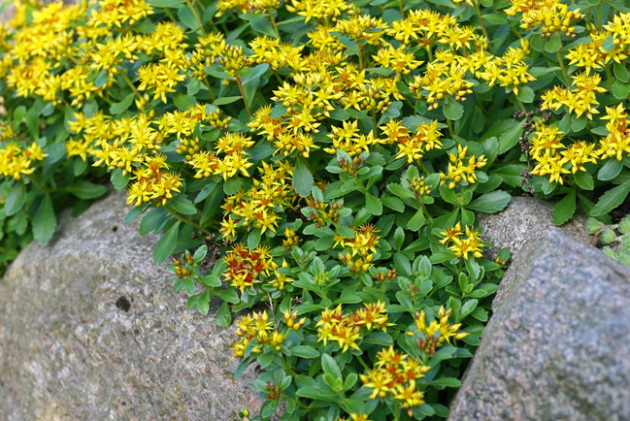
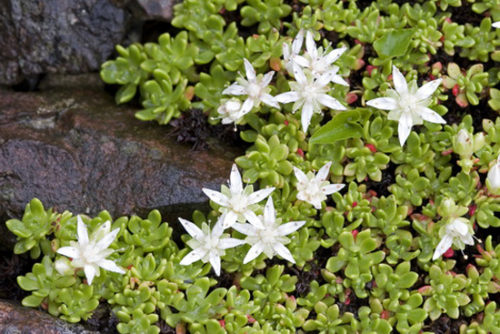
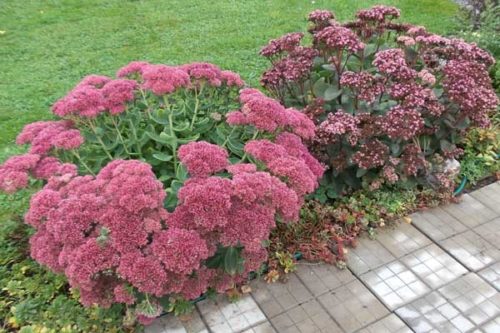
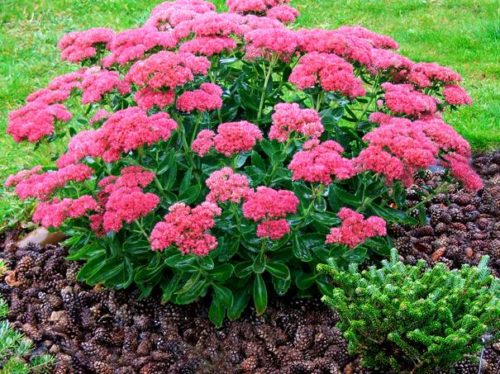
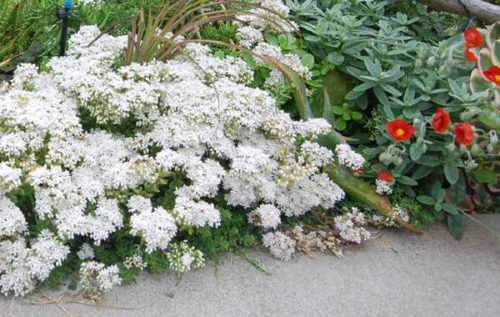
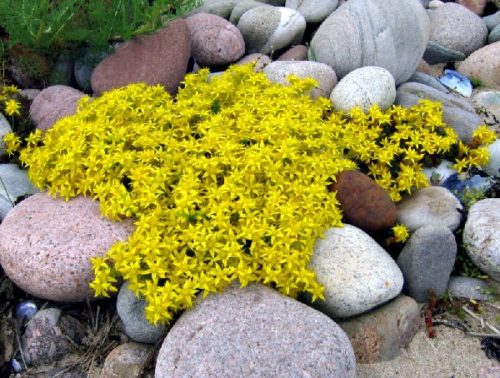
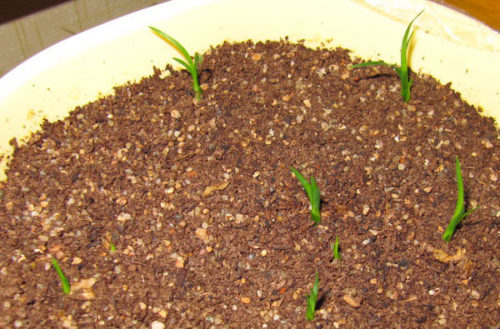
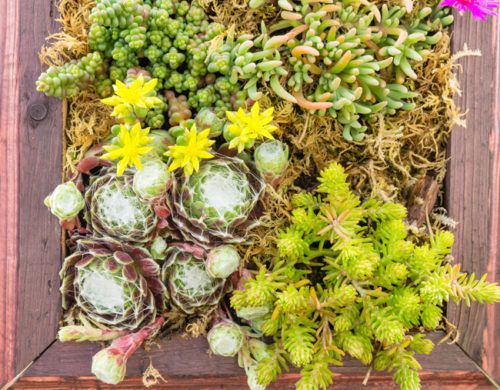
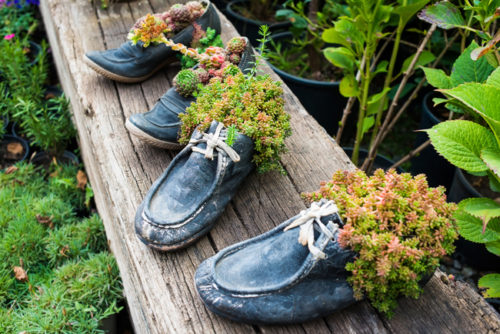
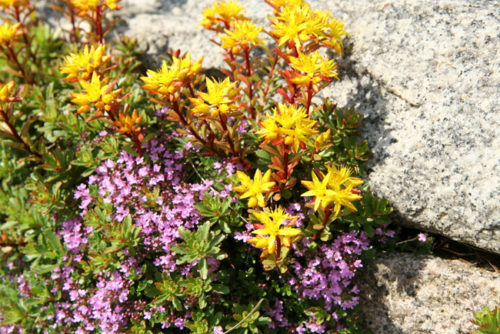
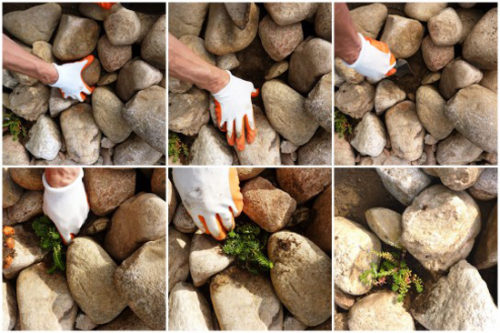
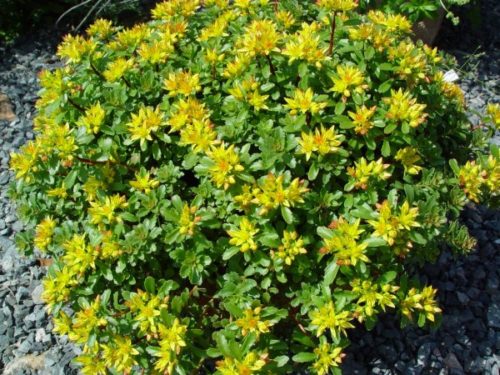
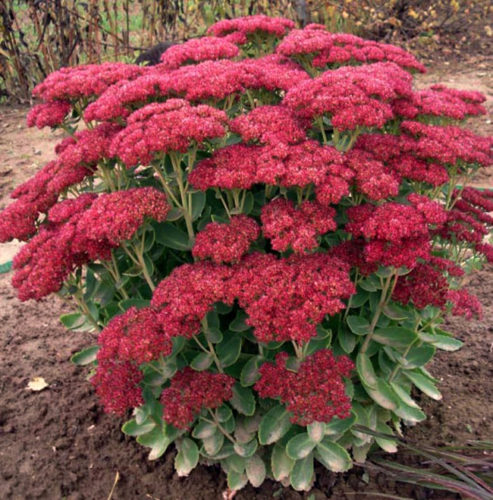
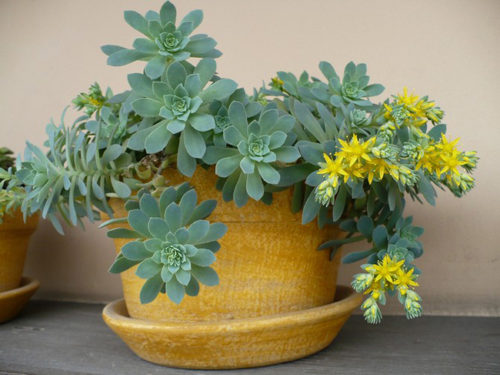
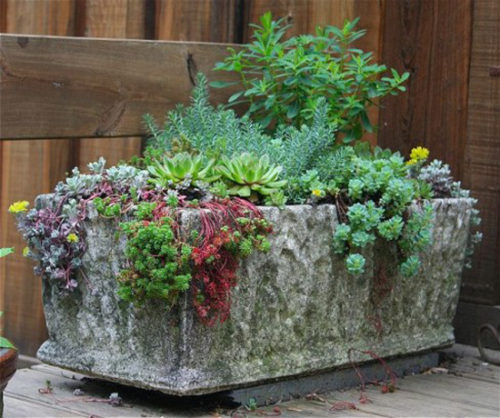
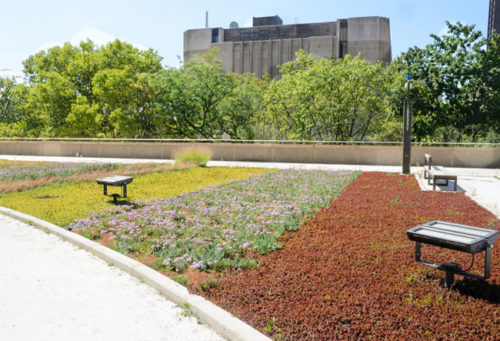
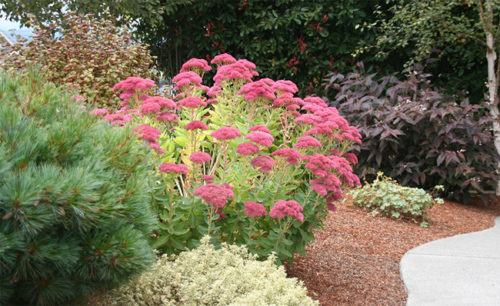












 Start a discussion ...
Start a discussion ...